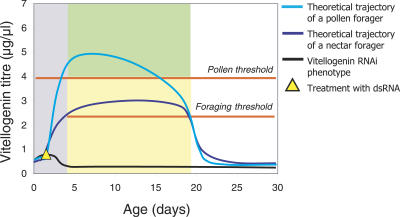Figure 5. Vitellogenin Has a Dual Role in Regulation of Social Behavior.
After the maturation phase, when bees are unable to forage (grey) [37], vitellogenin suppresses the transition from nest tasks to foraging activity when its titer remains above the foraging threshold level [3,7]. Below this threshold, the probability of initiating foraging is increased [5]. Pre-foraging vitellogenin titers above the pollen threshold prime workers for pollen foraging (green), while workers with lower pre-foraging titers (yellow) are primed for nectar foraging [9]. vitellogenin RNAi causes workers to mature with vitellogenin titers that are below both thresholds [3,7,9,12], resulting in the vitellogenin knockdown phenotype documented here: bees that forage precociously and preferentially collect nectar.

